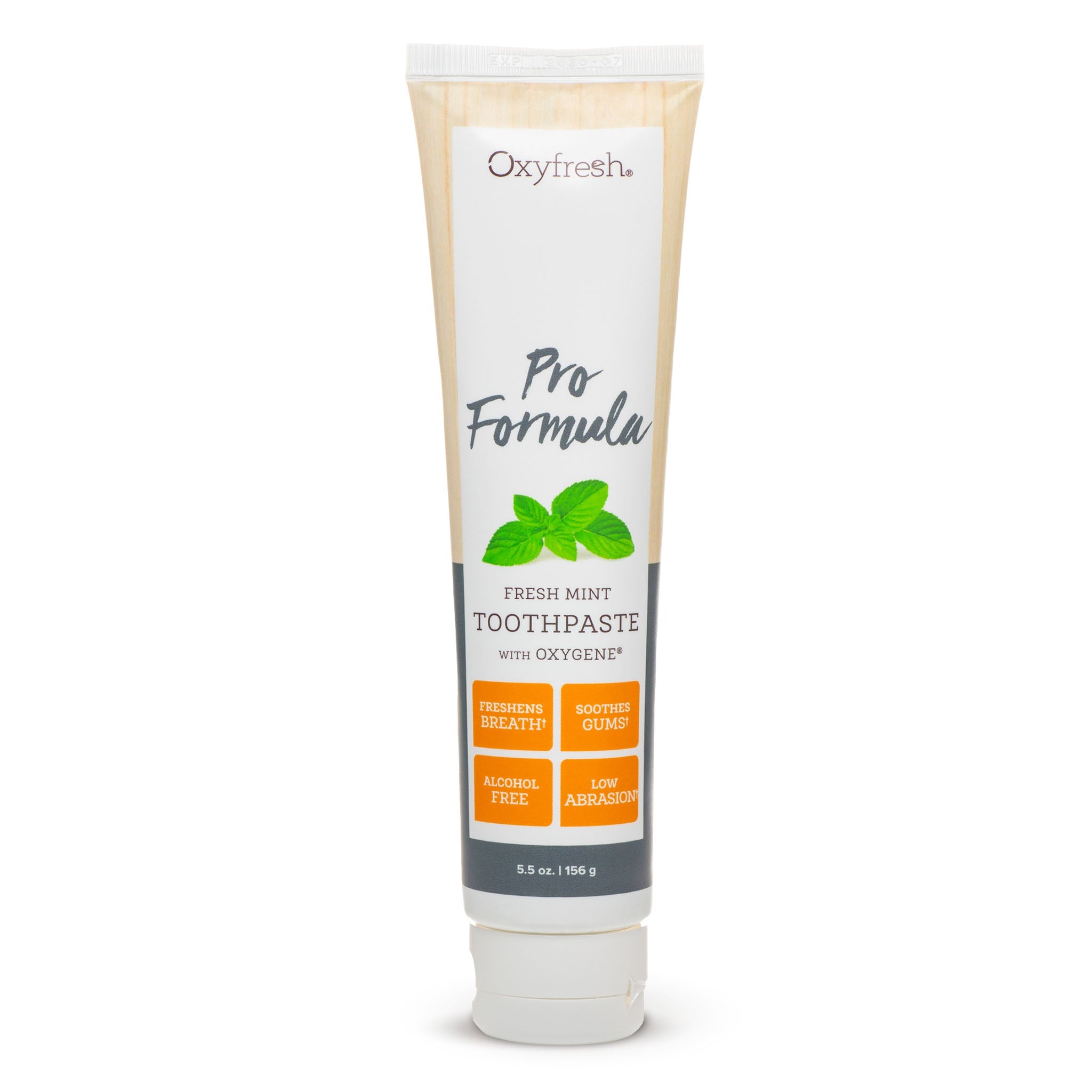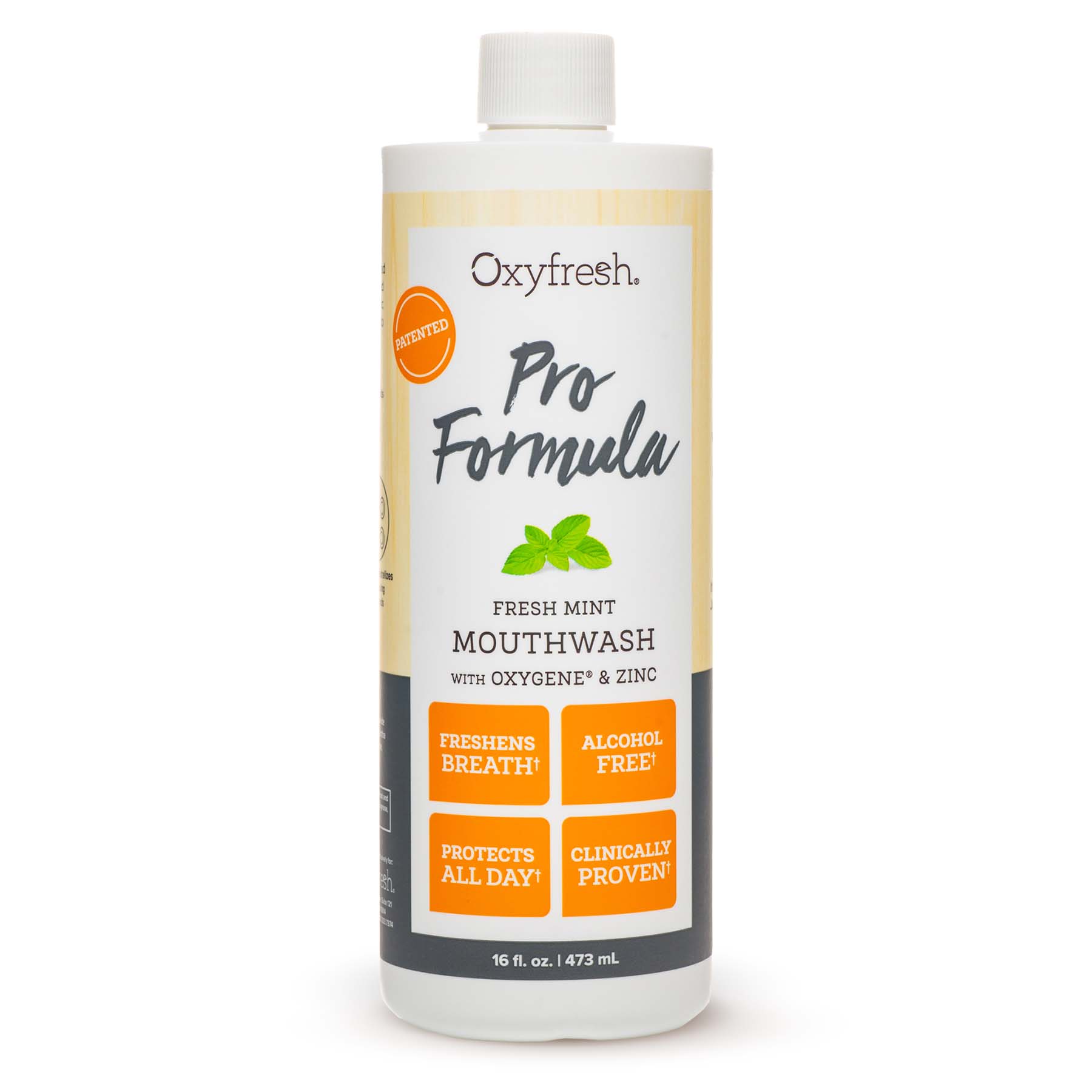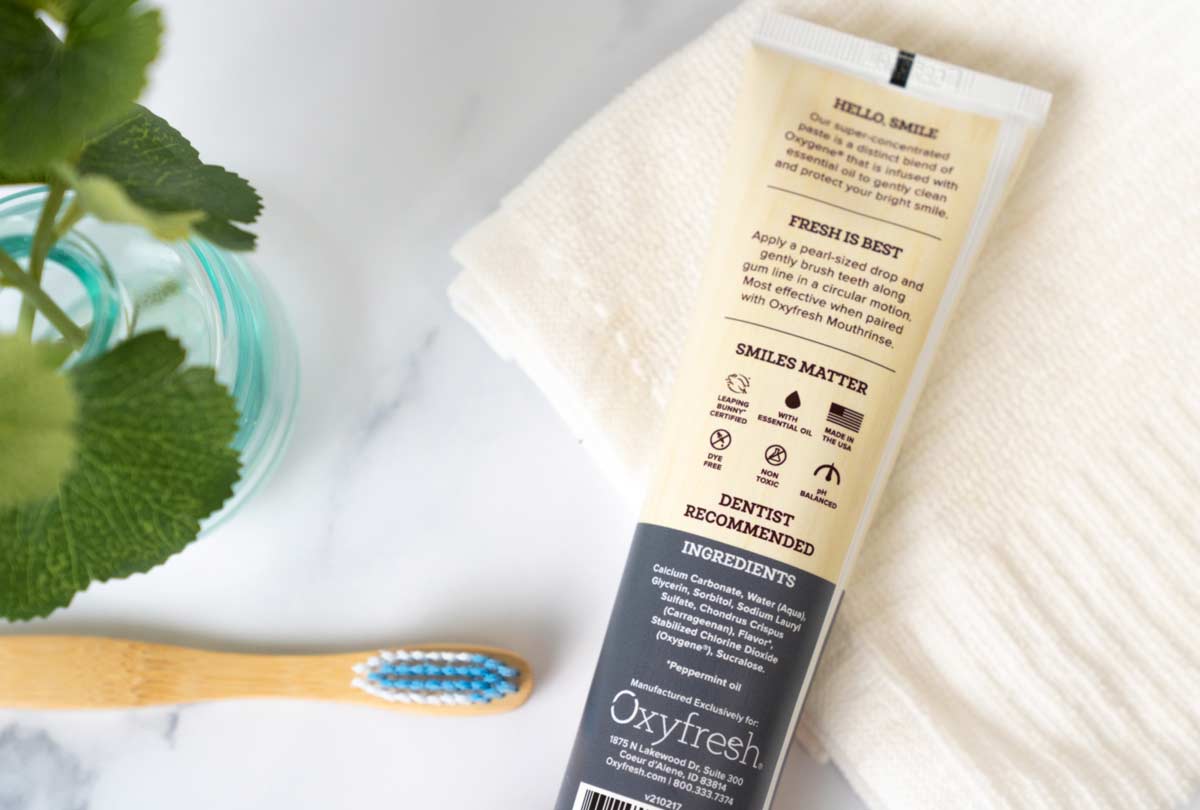We’ve all been too close to someone with bad breath, whether it’s a whispered conversation or a long, I'm-starting-to-feel-trapped car ride.
—How ‘bout we roll down the windows?
—But it’s 20 degrees out! GULP. What if WE are that "someone"?
The reality is many of us have bad breath and don’t know it.
Keep reading to uncover why this is, how to smell your own breath, and most importantly, what you can do to fix your bad breath.
Why It’s Hard to Smell Your Own Breath
Consider these numbers from a halitosis study of nearly 400 college women:
When surveyed, only 21.4% of participants believed their own breath smelled bad, yet 78.1% reported bad breath in OTHERS.
In a nutshell, we’re quick to point fingers (‘er, silently judge) other people’s bad breath while thinking our own is just peachy!

So why is it so tricky to smell our own breath? Because we’re around it all the time. Unlike the smell of smoke or a visit to stall #3 after a team lunch, our brains don’t perceive our own breath as a threat. In essence, we become "nose blind" or immune to our own smells.
During the pandemic, many people started to question their own breath due to the phenomenon called "mask mouth." Being in the thick of our own breath without a breather (no pun intended), or taking our masks off and then putting them back on later, clued us in to the fact that maybe our breath ISN’T as fresh as we thought.
How to Know If You Have Bad Breath
Floss
Simply floss your back molars (where food particles tend to accumulate and rot if not removed), and then smell the floss. If there’s an odor on the floss, that’s what others can smell too! Eek!
Spoon
Take a spoon (the hollowed-bowl part facing your tongue) and run it down the length of your tongue starting as far back as you can, then smell the goop that is deposited onto the spoon. Voilà ... instant bad breath indicator.
Ask for an Opinion
"Oh, hey, Holly, did you finish that report yet? Oh, and would you mind if I blow my breath in your face?"
Obviously this tip requires a bit of tact so you don’t end up scaring people or spending the day in Human Resources.
Getting permission first, ask a trusted friend or loved one if they’re willing to smell your breath and give you an honest answer. Parents, if you have kids, they make great volunteers for this, as sometimes they’re a little too honest.
If you’re more the solitary, just-leave-me-be-with-my-cats type, ask your dentist or dental hygienist for a breath assessment.
Wrist Lick
Lick your wrist (make sure you’re not wearing perfume or lotion), wait a few seconds for it to dry, and then smell your wrist. Note: don’t just use the tip of your tongue. Most bad breath compounds form on the way back part.
Bad Breath Gadget
You don’t have to be MacGyver to appreciate a good gadget. You can find halimeters online that are supposed to tell you if you have bad breath based on the volume of your Volatile Sulfur Compounds – those are the compounds that cause bad breath.
You can find pocket-sized ones around $25, but buyer beware. As many 1-star reviews as 5-star is a bit of a red flag for some of these products. That’s why we prefer the simpler bad breath test methods.

Causes of Bad Breath
If you’ve determined that you have bad breath, two big questions remain: WHY is it happening and WHAT can you do about it.
For the why, poor oral hygiene is the leading cause of bad breath. This means not brushing, flossing, or visiting the dentist for cleanings.
Additionally, dry mouth can be a cause of bad breath. This is exactly what it sounds like ... your mouth doesn’t have enough saliva. In a dry mouth environment, stinky sulfur compounds will quickly multiply. Dry mouth can occur due to medications you take, lifestyle habits like smoking, or simply not drinking enough water.
Certain foods like garlic and onions, or beverages like coffee and alcohol, can also produce bad breath, though it should be short-lived and not put you into a permanent state of halitosis.
Medical issues can also cause bad breath, including tonsil stones, GERD, celiac disease, or diabetes. It could even be post-nasal drip bad breath. If you have great oral hygiene habits but still find that your breath is stinky, discuss it with your doctor.

6 Ways to Freshen Your Breath, Fast
There are many ways to MASK bad breath, like popping breath mints nonstop or becoming a ferocious gum chewer à la Pete Carroll (Go Hawks!), but these don’t actually fix the problem. So while it’s fine to pop a mint on occasion or carefully plan your meals to exclude garlic before a big date, they aren’t long-term solutions like these ...
#1. Clean Your Tongue
Have you looked at your tongue lately? (We’ll wait.) If you see a yellow or white coating on it, that’s stinky bacteria! This can especially accumulate after drinking coffee, which is already pungent. You might also see a coating if you have post-nasal drip. Using a tongue cleaner is the easiest way to remove more stinky bacteria in the mouth vs. brushing ... 50% more to be exact!
Pro tip: You can also use a kitchen spoon if you don't have a tongue cleaner.
#2. Floss Every Day
No one likes a lecture about flossing, but it really is one of the best things you can do to fix bad breath. Brushing won’t get the food out between your teeth (especially those back molars), and if that sliver of roast beef is just left to sit there and rot, the smell will be not-so-appetizing. Flossing also keeps bacteria off the gums, improving oral health. If your gums bleed when you floss, that’s a sign to step up your oral care.
#3. Keep Your Dental Appointments
Saving time or money by skipping dental appointments never pays off. Plaque and tartar are filled with stinky bacteria, and if you have periodontal disease (advanced gum disease), brushing won’t fix the problem .... or your bad breath. A deep clean is needed to get below the gum line to the roots of the teeth to clear out plaque, tartar and bacteria.

#4. Drink More Water
Remember ... odorous compounds flourish in a dry environment. Water will help ensure that your mouth is making enough saliva (the body’s natural defense against bad breath) while at the same time helping to wash away stubborn food particles.
#5. Switch to Alcohol-Free Mouthwash
If you’re using an alcohol-based mouthwash, which most store brands are, you could be trapped in a vicious cycle of bad breath and not even know it.

Stop the bad breath cycle and switch to Oxyfresh alcohol-free mouthwash.
Did you know? Oxyfresh has 3 refreshing alcohol-free mouthwashes to choose from, guaranteed to freshen your breath all day. No burn, no drying, no staining ... and best of all, no bad breath!
#6. Brush 2x a Day for 2 Minutes
One of the biggest AHA moments when it comes to brushing is that you don’t have to brush like you’re The Rock in order to get your teeth clean. In fact, too-vigorous brushing can actually damage your enamel and make your teeth look more yellow.
Just use light circular strokes. And if you’re using a harsh abrasive toothpaste (if it’s screaming "Whitening Formula!" on the packaging, it’s probably too abrasive), it’s time to trade up for a gentler choice.
For the gentlest clean, we recommend Oxyfresh Pro Formula Toothpaste. It has one of the lowest abrasion ratings on the market to gently polish your teeth without risking your enamel. Plus, only Oxyfresh has Oxygene®, a non-toxic purifier that neutralizes stinky bad breath compounds in just 60 seconds.
Cheers to Fresh Breath. All right, who’s ready for a cup of coffee, followed by a swish of water and a tongue cleaning? You’ve digested a lot of info about how to smell your own breath and how to fix a bad breath problem. We hope it’s been helpful and that you’ll soon be rocking the freshest breath ever. You deserve it!








